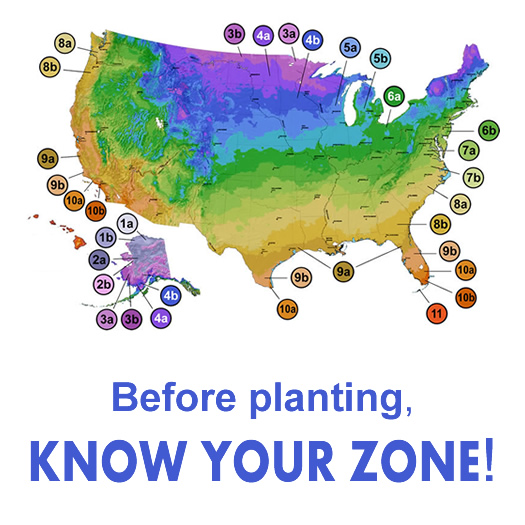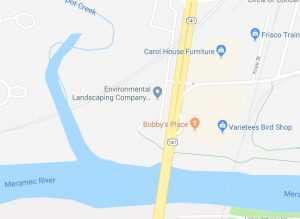When is the best time to plant trees in Missouri?
ST. LOUIS LANDSCAPING TIPS: WHEN IS THE BEST TIME TO PLANT?
It can be extremely disappointing to have a beautiful tree or other new plants installed on your property, only to see them struggle to survive or even die off in harsh weather. Knowing when to put your new plants in the ground is the first step towards healthy and attractive landscaping.
The basic rule of “when” to plant is simple: your new trees, shrubs or ornamentals need enough time to establish strong roots before being exposed to the stress of high heat, low water/drought conditions or frigid temperatures. In the St. Louis region this means avoiding the extreme heat of summer, and the coldest parts of winter (when the ground is frozen anyway, making digging impossible).
Spring is a great time for planting here, from about mid-March thru May. This gives your new landscaping plenty of time to settle in and grow healthy roots before the heat of summer arrives.
Fall can also be a great time to plant new deciduous trees, when the soil temperature is about 50 degrees or so. In our area that means late September or October.
WHAT Should You Plant?
USDA Plant Hardiness Zones are a standard which homeowners and landscapers can use to determine which plants are most likely to thrive in a given location.
First released in 1960, the U.S. Department of Agriculture created the map below to classify each part of the country into one of 11 different zones, based on the coldest temperature they are likely to experience each year. This is because extreme cold temperatures are one of the biggest threats to outdoor plants. The zones begin at 1 (year-round frost; Alaska) and go up to 11 (year-round tropical weather; Hawaii).

There is a 10-degree difference between zones, so it gets 10 degrees colder in winter in zone 6 than in zone 7 for example. They added “a” and “b” designations to break-down the zones further, using 5-degree increments. (“a” gets slightly colder than “b”)
Missouri is divided into four planting zones using this guide. A strip of northern MO along the Iowa border is designated 5b. Most of central Missouri and Illinois (including the St. Louis metro) is 6a and 6b. A small corner of SE Missouri (“bootheel” area) enjoys the warmer growing zone of 7a.
Using hardiness zone data is an excellent starting point for novice gardeners to determine which flowers, ground-covers, trees or shrubs to purchase and a reliable guide for experienced landscapers too. But cold hardiness maps only show part of the picture, since extreme heat and dry weather can also have major detrimental effects on your plants. And as average high temperatures have risen across the country, heat-tolerant and drought-resistant varieties are gaining in popularity.
(the more recent Heat Zone map from the American Horticultural Society is a good resource here)
Beyond temperature, other variables to consider when selecting the best plants for a given environment include annual precipitation, average humidity, winter sunshine, micro-climates and soil type. It is prudent of all gardeners to consider the data collected and the Missouri plant map before purchasing flowers, trees or shrubs.
USDA Plant Hardiness Zone Map of Missouri
Most Popular Trees in Zone 6
There are a great number of Pin Oak, Sweetgum, Silver Maple, Ash, White Pine, Dogwood, American Elm and Bradford Pear specimens throughout local neighborhoods.
*But just because these trees are common, doesn’t necessarily mean they’re the best landscaping choice for you.
For example, Sweetgum trees are well-suited to local weather conditions, but drop thousands of spiky gum balls which can be a real headache to clean up year after year! Bradford Pears grow quickly and have beautiful flowers and leaves, but are equally well-known for trunks that crack from stress caused by high winds, ice or heavy snow. The popularity of the American Elm also led to its demise, as overpopulation helped the spread of the lethal Dutch Elm Disease, while the recent arrival of the Ash Borer bug is forcing St. Louis City to cut down thousands of Ash trees to prevent infestation.
When you work with Environmental Landscaping, we use our many years of experience to determine recommendations based on your unique property and your individual goals (providing shade, privacy screen, creating visual interest).
In addition to varieties that we know will thrive in the local climate, we also select trees and other plants based on color, shape and size. Some examples include:
- Flowering Dogwood – One of our favorites, but requires a well-drained and filtered sun location to thrive. It is excellent if you require a small to medium tree that will flower.
- Red Bud – Another great tree to have in the yard. Full sun and it will flower profusely. Try the Forest Pansy variety, with its burgundy foliage.
- Skyline Locust – If you require a light and airy shade tree, this is can be a more unique solution. Perfect for a parkway or next to a patio.
- Clump River Birch – Well-adapted to wet, soggy areas where other trees may struggle.
- October Glory Red Maple – Great for autumn colors; for more orange-to-yellow foliage, plant Sugar Maple.
- Pin Oak – If strength and shade are your goals, there’s nothing more regal than this variety.
Japanese Maple are quite popular due to their vibrant colors and interesting shapes, and they can thrive in our zone depending on placement. But these tree are also quite sensitive to soil conditions and sunlight received, resulting in an expensive mistake if planted in the wrong spot. Some of the more common evergreen trees we recommend include Spruce varieties (White, Norway, Colorado Blue) and the Austrian Pine.
Plant Quality MATTERS
We should also note that the quality of the stock you plant really does matter.
You can sometimes find decent-quality stock at your local big box store (like Walmart, Lowe’s), but usually your only choices are sub-standard specimens that haven’t been cared for very well. This trade-off between price and quality is most apparent during a St. Louis summer – these stores don’t keep enough staff to keep their outdoor plants watered properly, so you’ll see many dead or dying plants as temperatures rise.
Employee knowledge is usually minimal too – the person helping you might be from the paint department, so customers are often given incorrect or incomplete information. Mislabeled plants are commonplace.
For those reasons, we can’t recommend these types of stores for anything but small, inexpensive plantings (cheap annuals, filler plants, groundcover) and certain supplies and tools. But for plants in higher-profile areas or larger items like trees, you should work with a licensed dealer like Environmental Landscaping.
We’ve been in business since 1970, and can use our extensive landscaping knowledge to help you select the perfect plant varieties for your property. We sell certified nursery stock, so you know you’re getting only the healthiest, most hardy plants for your landscaping. And your new plantings will be professionally installed and guaranteed!
In addition to plant installation and sales – we also specialize in low-voltage lighting, patios, walkways and decks, unique water features and so much more.
Please call today with your questions or to schedule an appointment: (636) 225-3548. We look forward to talking with you!
Thanks,
Tory C.
Owner, Environmental Landscaping








